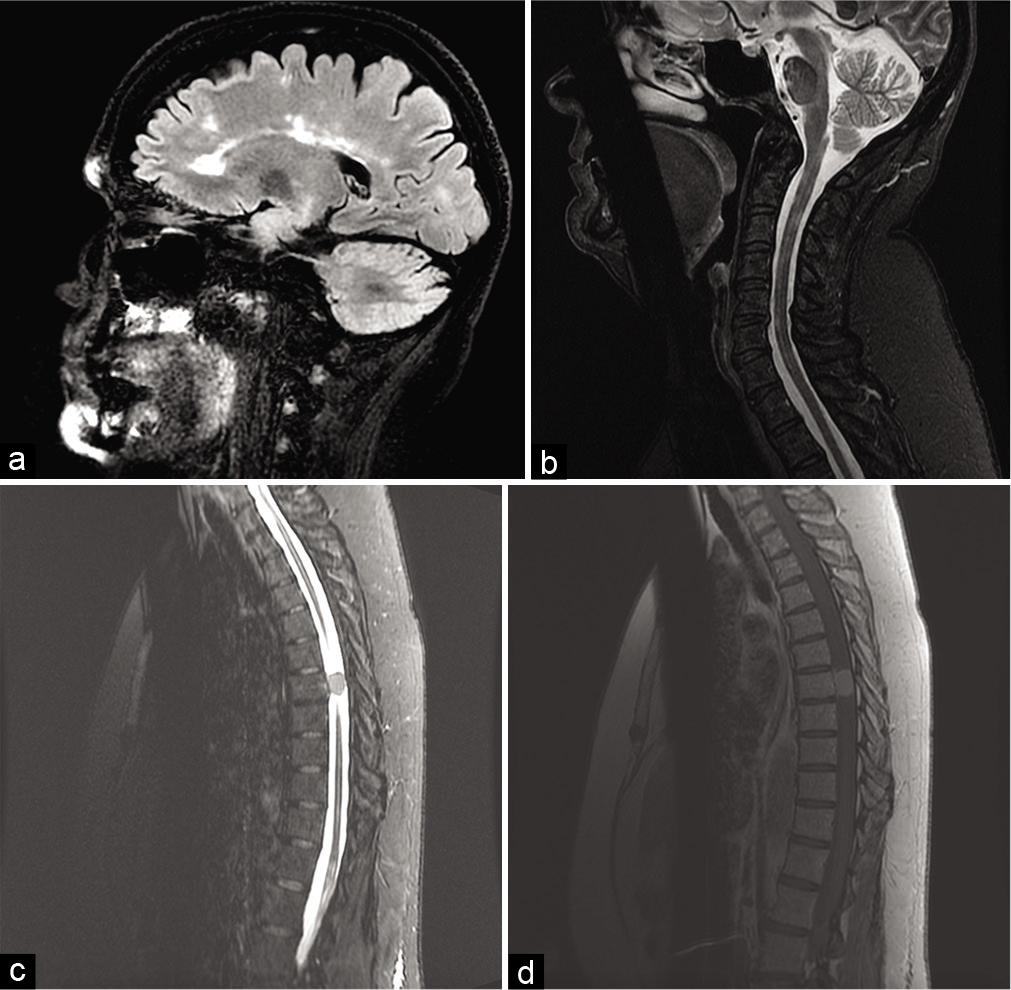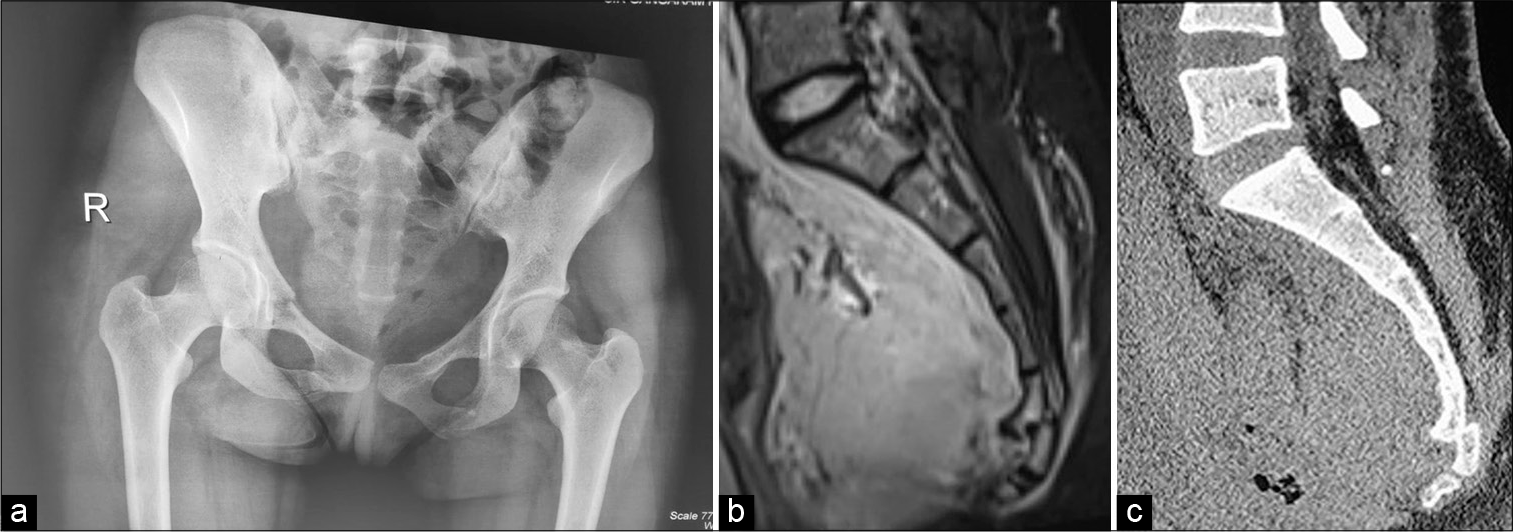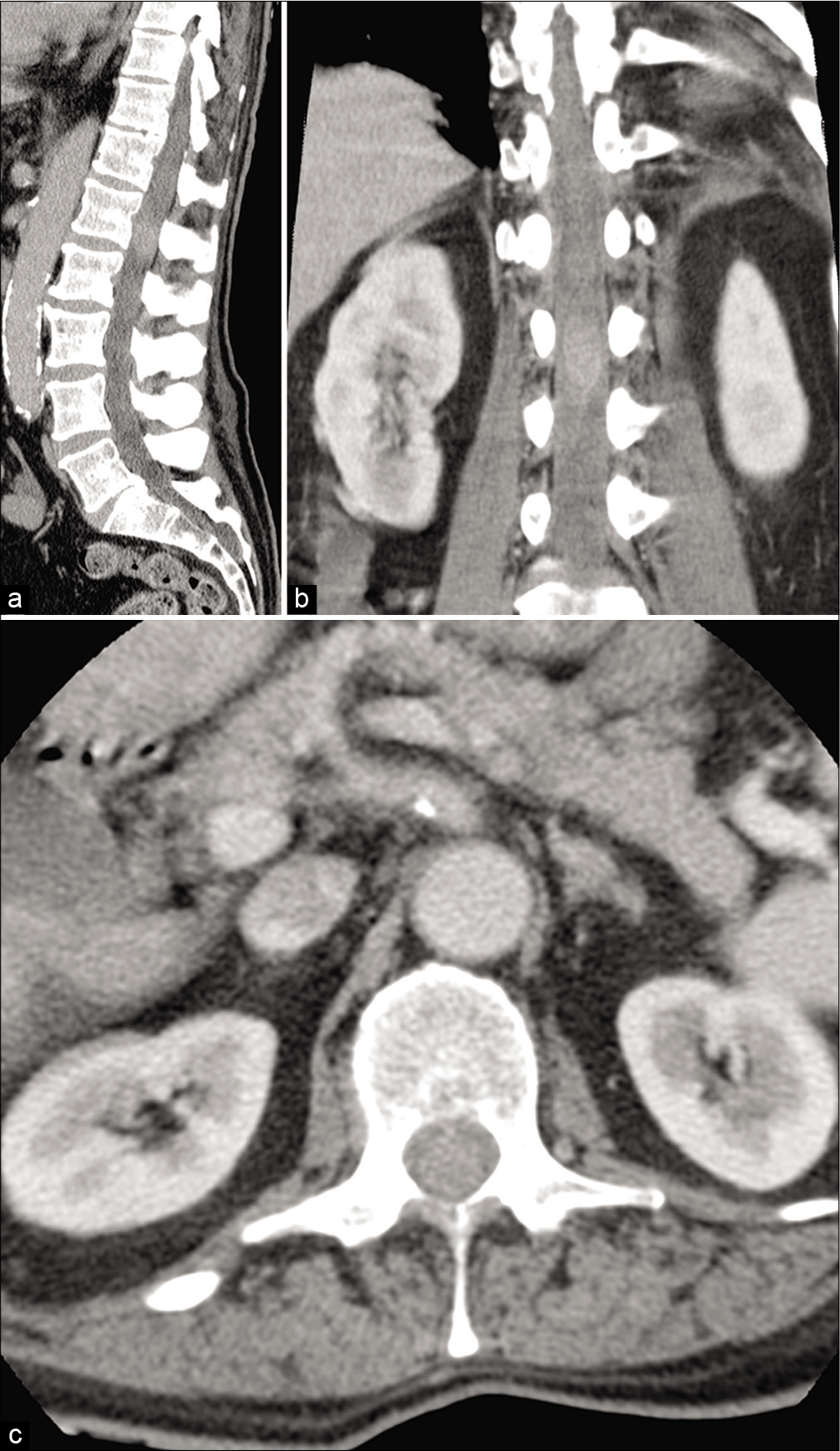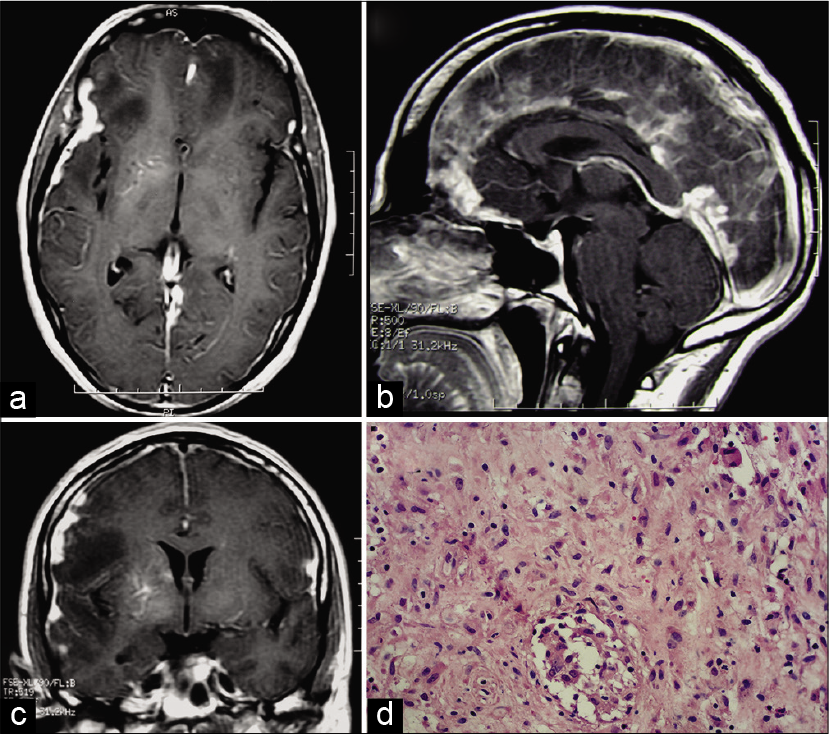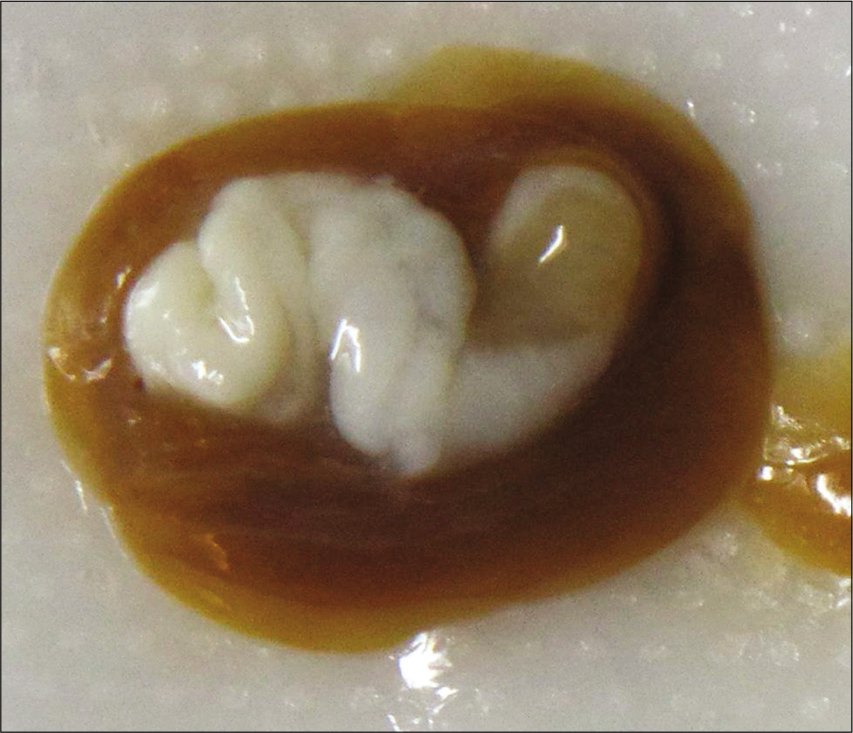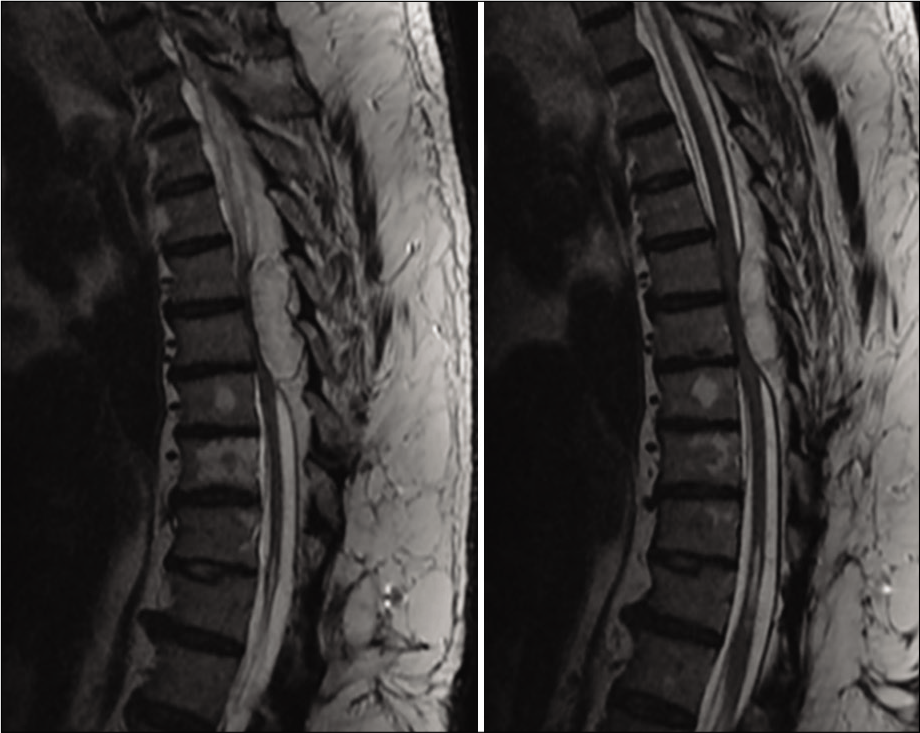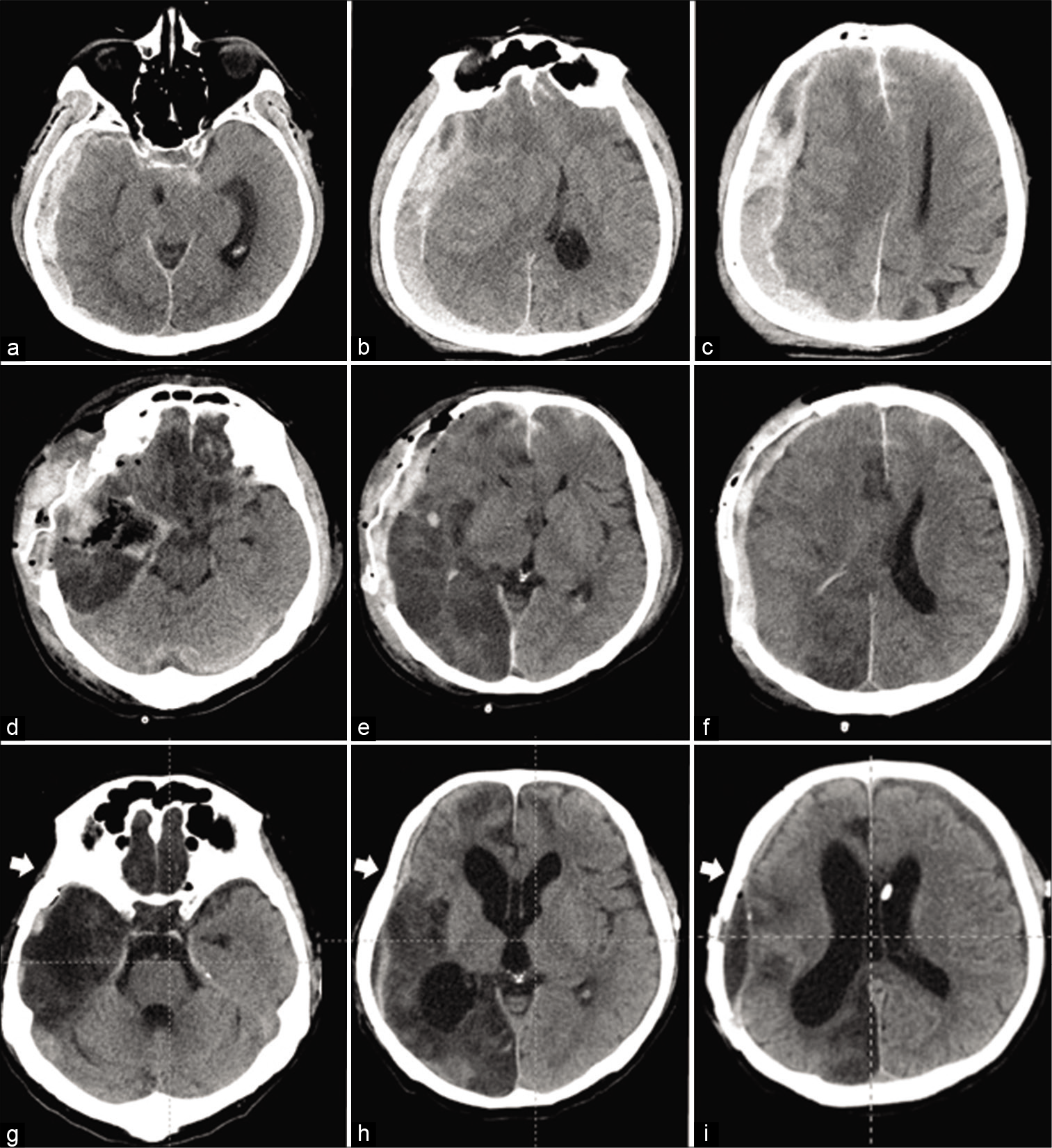Spinal meningioma in a patient with multiple sclerosis
Date of publication: 18-Jul-2020
Background: Multiple sclerosis (MS) is the most common immune-mediated inflammatory demyelinating disease of the central nervous system. Multiple brain and spinal tumors have been linked to MS, but a causal relationship between the two has not been determined. Here, we report a case of spinal meningioma in a patient with MS and review literature discussing the possible connection between these two disease entities.
Traumatic posterior dislocation of sacrococcygeal joint: A case report and review of the literature
Date of publication: 18-Jul-2020
Background: Sacrococcygeal joint dislocation is very rare. There are seven cases of sacrococcygeal joint dislocation found in the literature; most are anterior, and only one prior case of posterior dislocation was reported involving the mid-coccygeal joint. Here, we report another case of posterior dislocation of the sacrococcygeal joint.
Letter to the Editor regarding “Can early cranioplasty reduce the incidence of hydrocephalus after decompressive craniectomy? A meta-analysis”
Date of publication: 18-Jul-2020
Solitary osteochondroma of dorsal spine causing canal stenosis with myelopathy – A case report with review of literature
Date of publication: 18-Jul-2020
Background: Osteochondroma is a common benign tumor arising from the long bones. It rarely arises in the spine, where it can cause mild symptoms such as backache all the way up to compressive myelopathy. Malignant transformation has also been reported. Here, the authors present a 52-year-old male with myelopathy attributed to a rare thoracic solitary osteochondroma.
An uncommon intramedullary tumor: Primary medullary cone melanoma
Date of publication: 18-Jul-2020
Background: Melanoma is the third most common primary tumor to metastasize to the central nervous system (CNS). However, primary CNS melanoma is very rare, and primary intramedullary melanoma is even less frequently encountered, with only 27 cases published in the literature. There are no pathognomonic imaging characteristics, therefore, the diagnosis must be confirmed immunohistologically and the preferred treatment is the gross total resection.
Hypertrophic cranial pachymeningitis coinfection with tuberculosis and actinomycosis
Date of publication: 18-Jul-2020
Abstract
This is a rare case report about hypertrophic cranial pachymeningitis coinfection with tuberculosis and actinomycosis in a 35-year-old male. The patient presented with progressive headache, paraesthesia, and blurred vision. Dural biopsy, histology, and cultures are imperative in pachymeningitis for establishing the diagnosis and guiding treatment.
Intraventricular adult Taenia solium causing hydrocephalus: A case report
Date of publication: 18-Jul-2020
Background: Neurocysticercosis (NCC) is the most common parasitic infection of the central nervous system worldwide and is caused by the larval form of the tapeworm Taenia solium. In general, T. solium larval form may be located in the neuraxis, resulting in pathology. Here, we report a rare case of female with a history of adult onset seizures presenting with adult form T. solium in the fourth ventricle, causing hydrocephalus.
Posttraumatic thoracic epidural capillary hemangioma – A rare case report
Date of publication: 11-Jul-2020
Background: Capillary hemangiomas are benign vascular lesions commonly seen in subcutaneous tissues. The most common site of origin is from the vertebral body, and only a few cases of isolated lesions in thoracic epidural space, especially after trauma, have been reported in the literature.
Hemifacial spasm due to multiple neurovascular conflicts: A conundrum
Date of publication: 11-Jul-2020
Aggressive internal and external decompression as a life-saving surgery in a deeply comatose patient with fixed dilated pupils after severe traumatic brain injury: A case report
Date of publication: 11-Jul-2020
Background: To maximize control of the intracranial pressure in deeply comatose patients with malignant cerebral swelling, combination of the surgical techniques for internal and external brain decompression may be reasonable, as demonstrated in the presented case.


